
The Kingston upon Hull tramway network was a network of 4 ft 8 1⁄2 instandard gauge tram lines following the five main roads radially out of the city centre of Kingston upon Hull, East Riding of Yorkshire, England. Two of these lines went west, and two east. The fifth went to the north, and branched to include extra lines serving suburban areas. Additionally a short line linked the city centre to the Corporation Pier where a ferry crossed the Humber Estuary to New Holland, Lincolnshire.
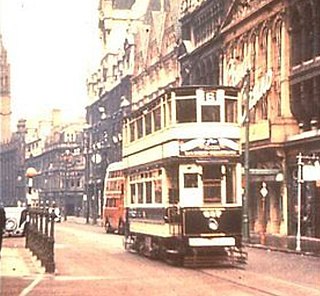
Birmingham Corporation Tramways operated a network of tramways in Birmingham from 1904 until 1953. It was the largest narrow-gauge tramway network in the UK, and was built to a gauge of 3 ft 6 in. It was the fourth largest tramway network in the UK behind London, Glasgow and Manchester.
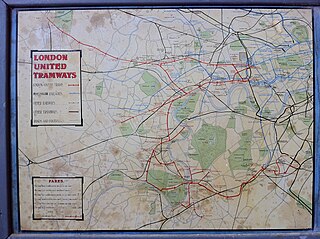
London United Tramways Company Limited was an operator of trams and trolleybuses in the western and southern suburbs of London, UK, from 1894 to 1933, when it passed to the London Passenger Transport Board.
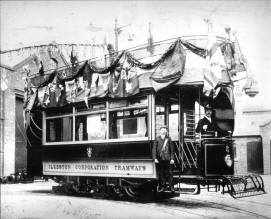
Ilkeston Corporation Tramways was a tramway network in Ilkeston, Derbyshire, in the East Midlands of England run firstly by Ilkeston Borough Council and from 1916 by the Nottinghamshire and Derbyshire Tramways Company. The system ran between 1903 and 1931. Ilkeston was the first town in Derbyshire to adopt and operate a fully electrical tramway system.

Reading Corporation Tramways operated a tramway service in Reading between 1901 and 1939.
Lowestoft Corporation Tramways was the operator of the electric tramway system that served Lowestoft from 22 July 1903 until 8 May 1931.

Portsmouth Corporation Transport was a tram, trolleybus and bus operator formed in 1898, serving the city of Portsmouth, and owned by Portsmouth Corporation. Tram services ended in 1936, trolleybus services in 1963, while bus operations continued until the company was privatised in 1988.

Leicester Corporation Tramways was a tramway system in Leicester, England from 1901 to 1949.

Ipswich Corporation Tramways was an electric tramway system that served the town of Ipswich in Suffolk from 23 November 1903 until 26 July 1926.

Burton upon Trent Corporation Tramways was a tramway service in Burton upon Trent between 1903 and 1929.

Brighton Corporation Tramways operated an electric tramway service in Brighton between 1901 and 1939.
Barking Town Urban District Council Light Railways operated a passenger tramway service in Barking between 1903 and 1929.
The South Staffordshire and Birmingham District Steam Tramways Company which became the South Staffordshire Tramways Company operated a tramway service from their depot in Wednesbury between 1883 and 1924.
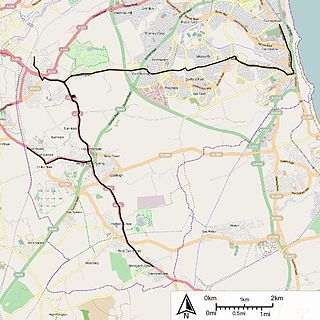
The Sunderland District Electric Tramways operated an electric tramway service from Grangetown to Easington Lane between 1905 and 1925.
Perth Corporation Tramways operated an electric tramway service in Perth, Scotland between 1903 and 1929.
The Sheerness and District Tramways operated a tramway service in Sheerness between 1903 and 1917.

Maidstone Corporation Tramways operated a tramway service in Maidstone in England between 1904 and 1930.
Bury Corporation Tramways operated a tramway service in Bury, Greater Manchester, England between 1903 and 1949.

Paisley District Tramways Company operated a tramway service in Paisley between 1903 and 1923.
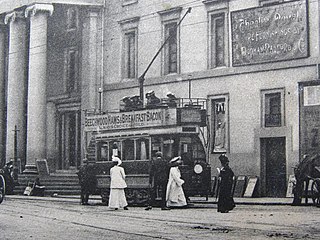
The tramways in Plymouth were originally constructed as four independent networks operated by three different companies to serve the adjacent towns of Plymouth, Stonehouse and Devonport in Devon, England. The merger of the 'Three Towns' into the new borough of Plymouth in 1914 was the catalyst for the three companies to join up under the auspices of the new Plymouth Corporation. The network was closed in 1945, partly as a result of bomb damage during World War II.















